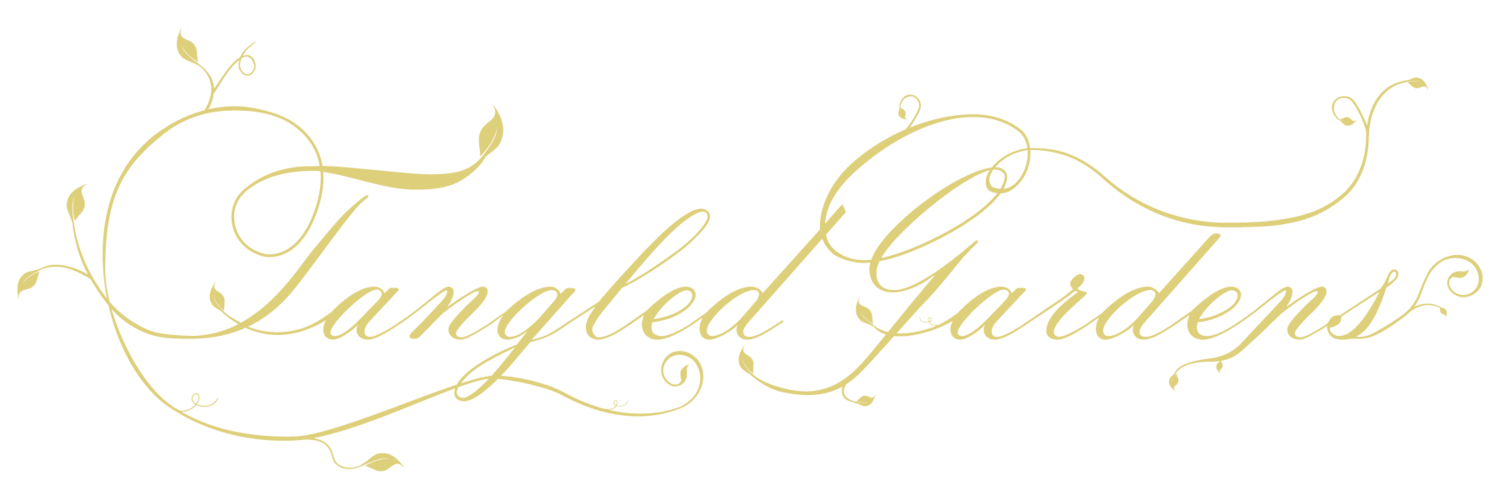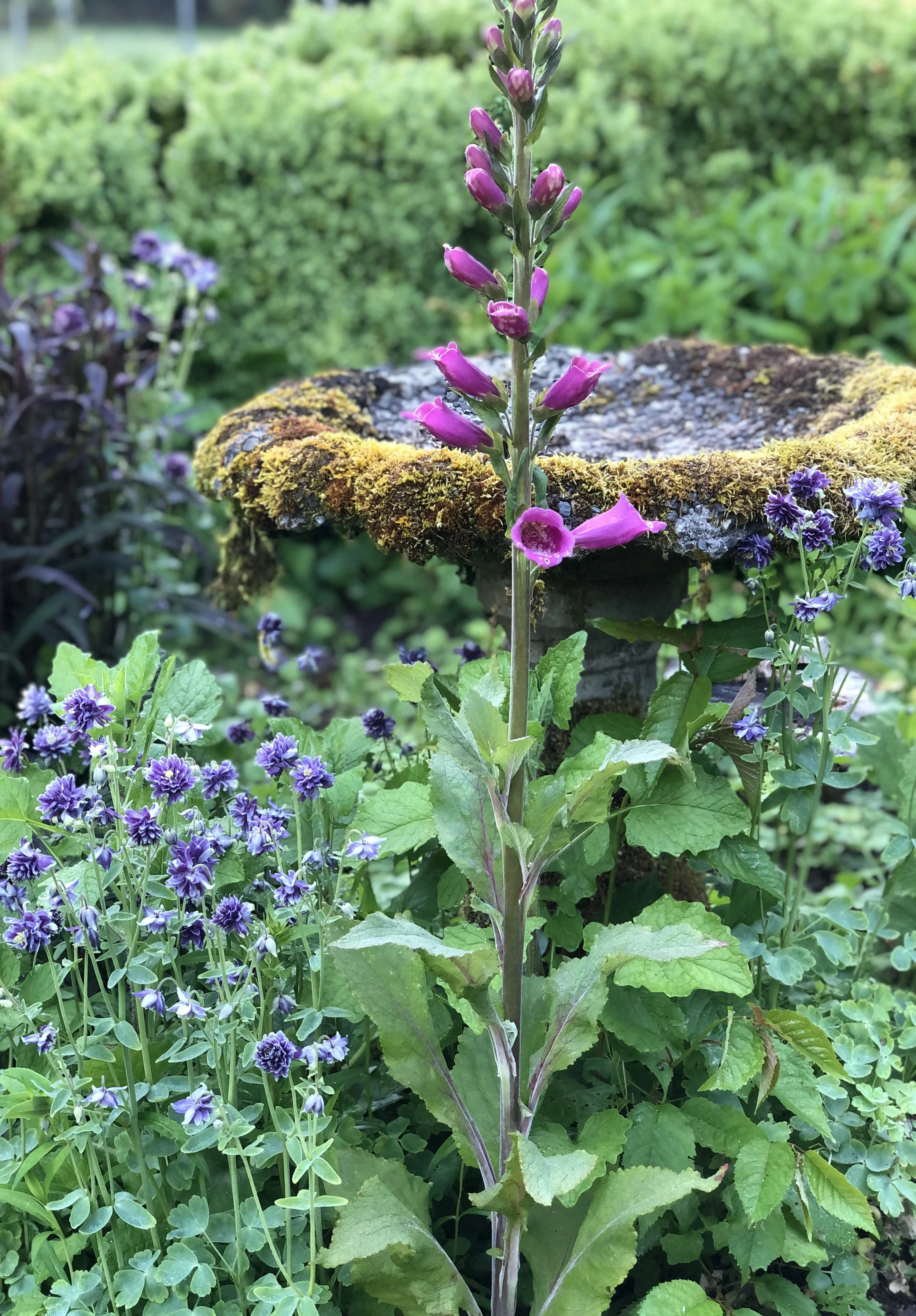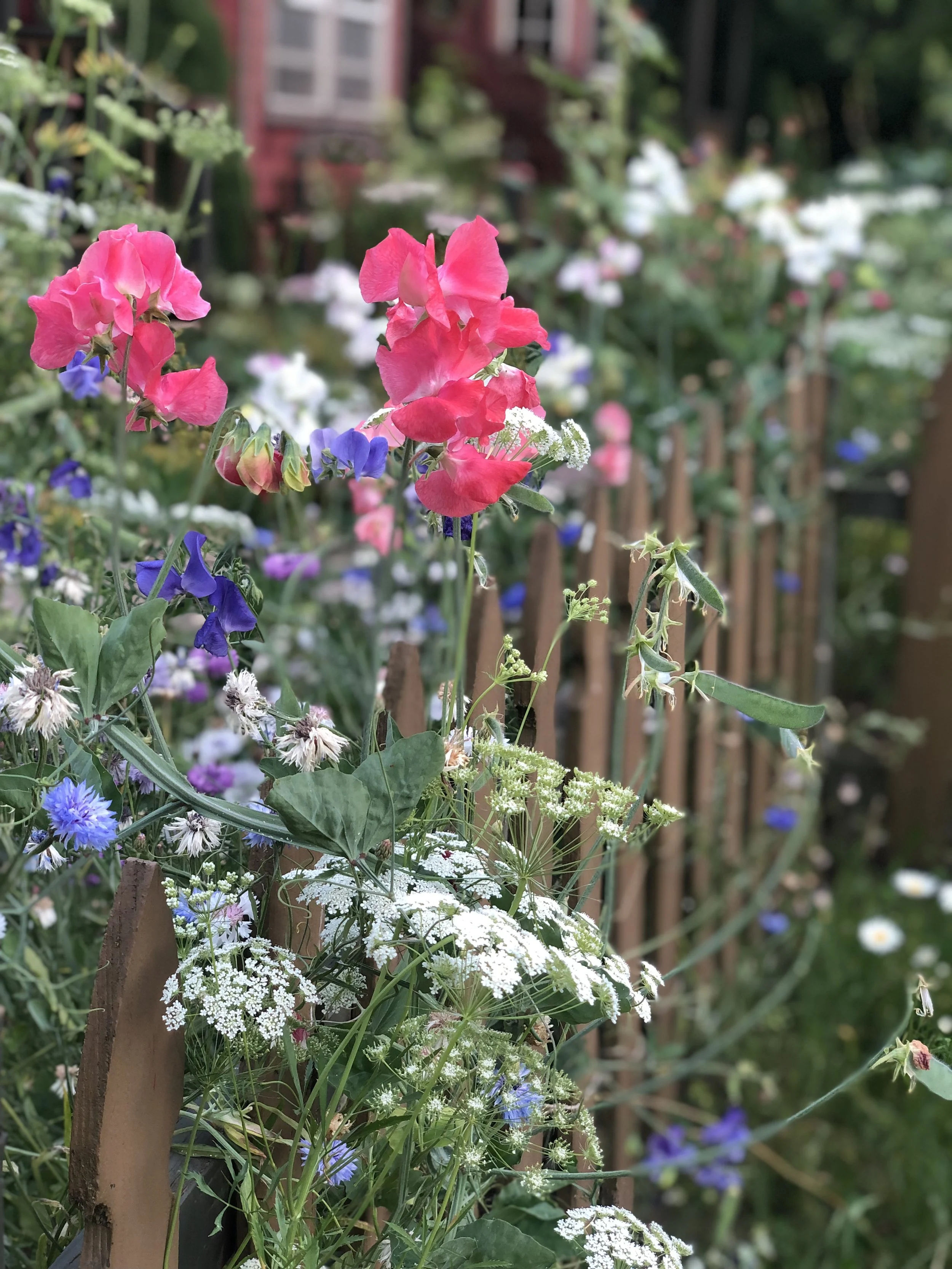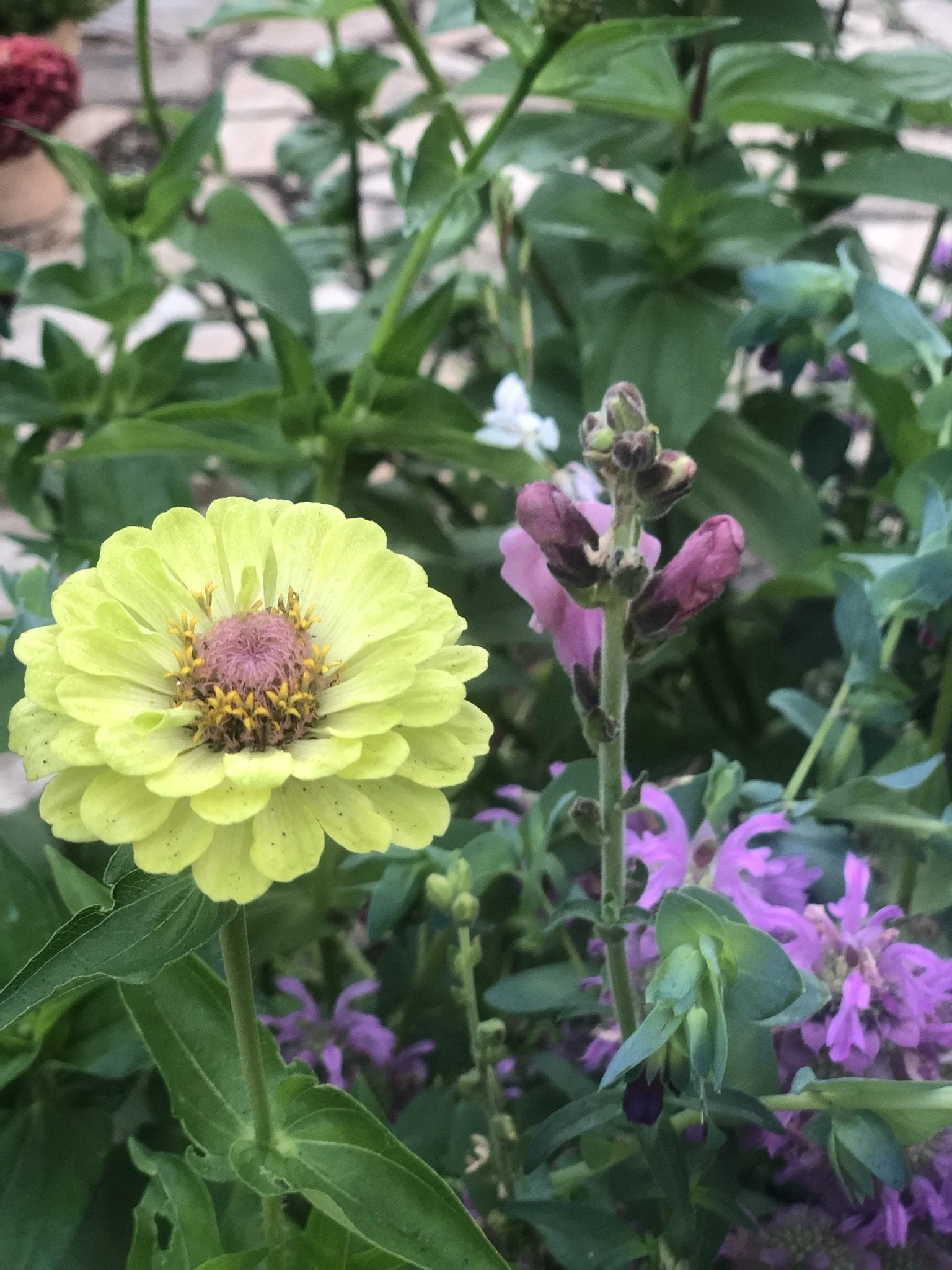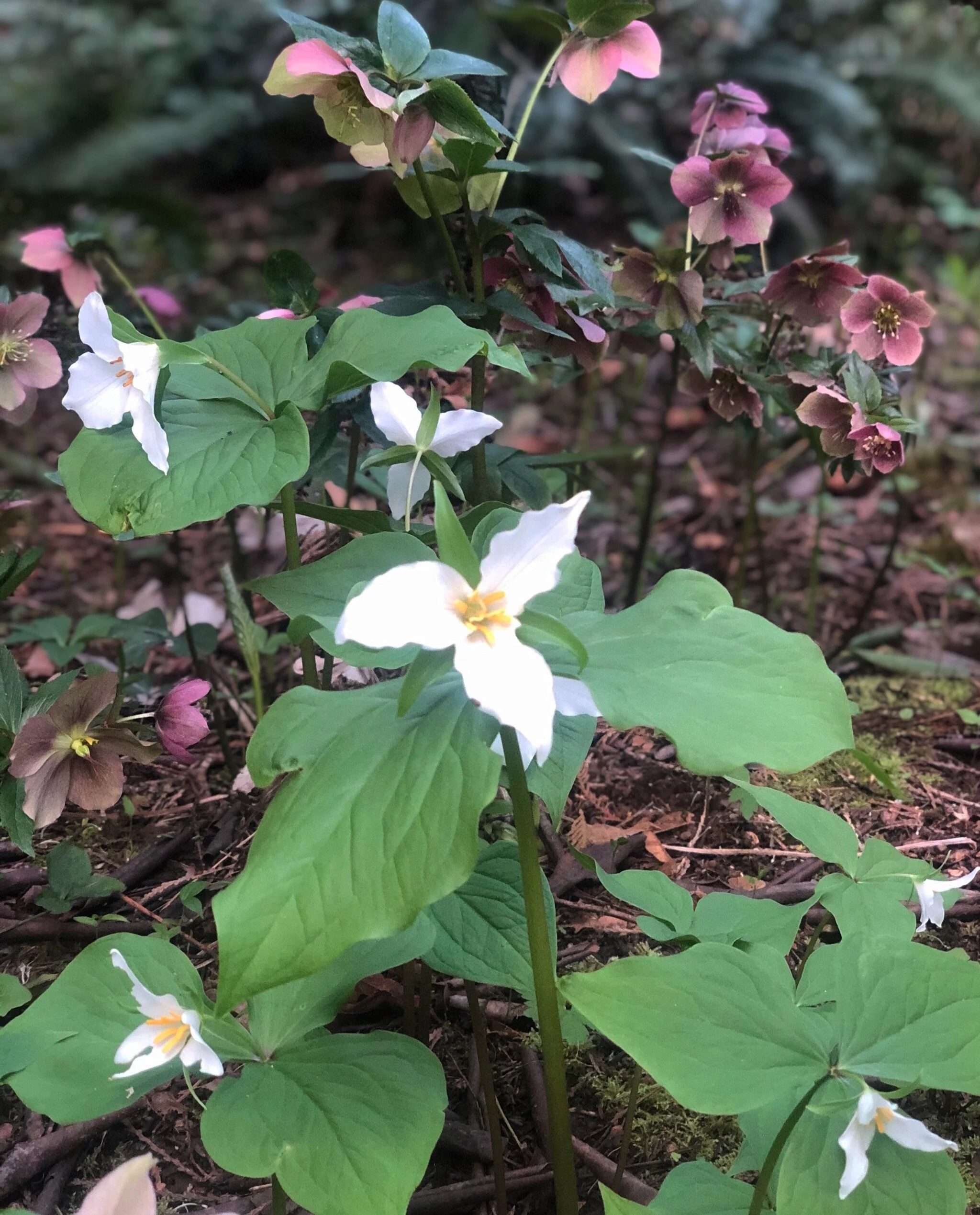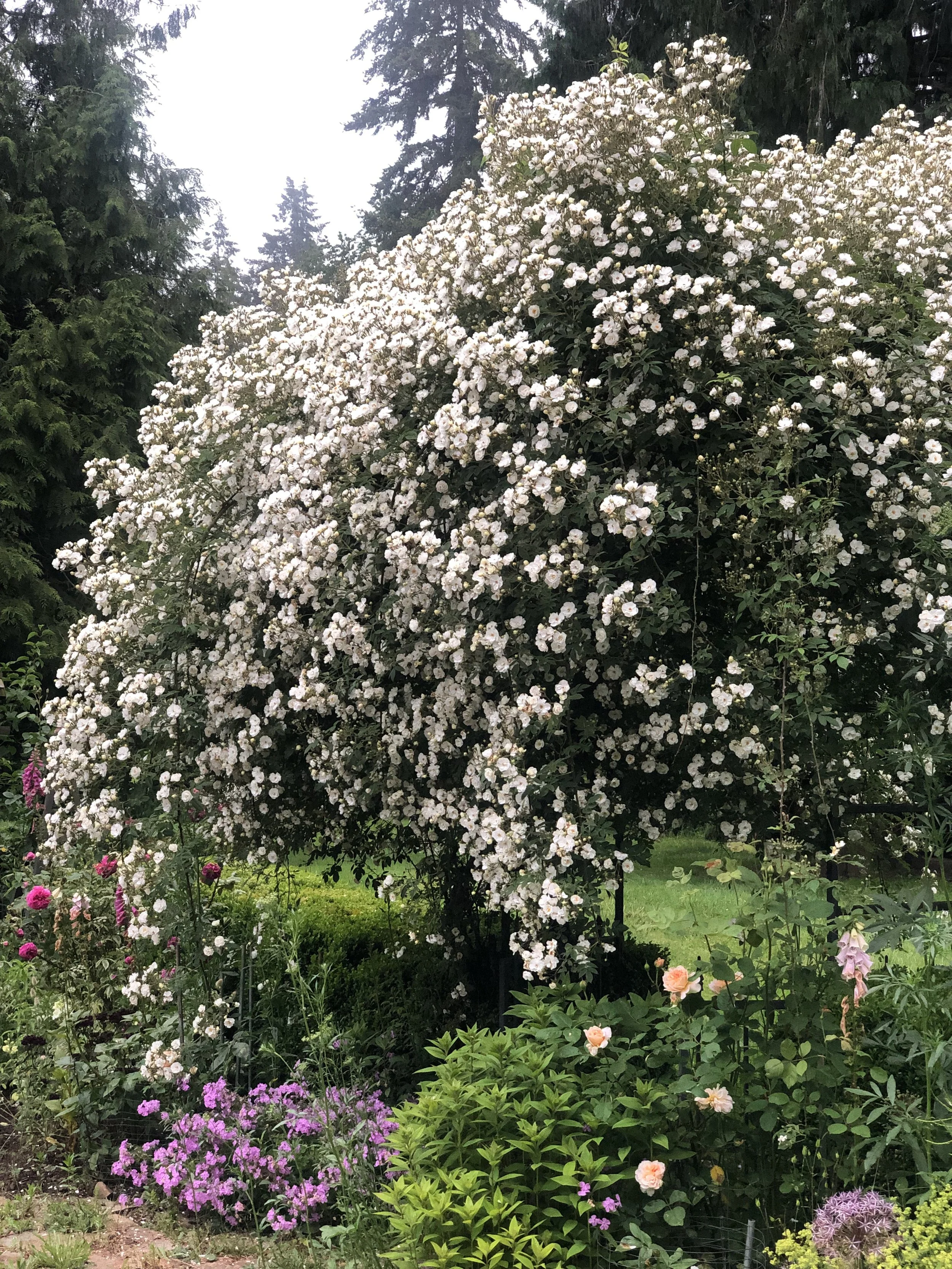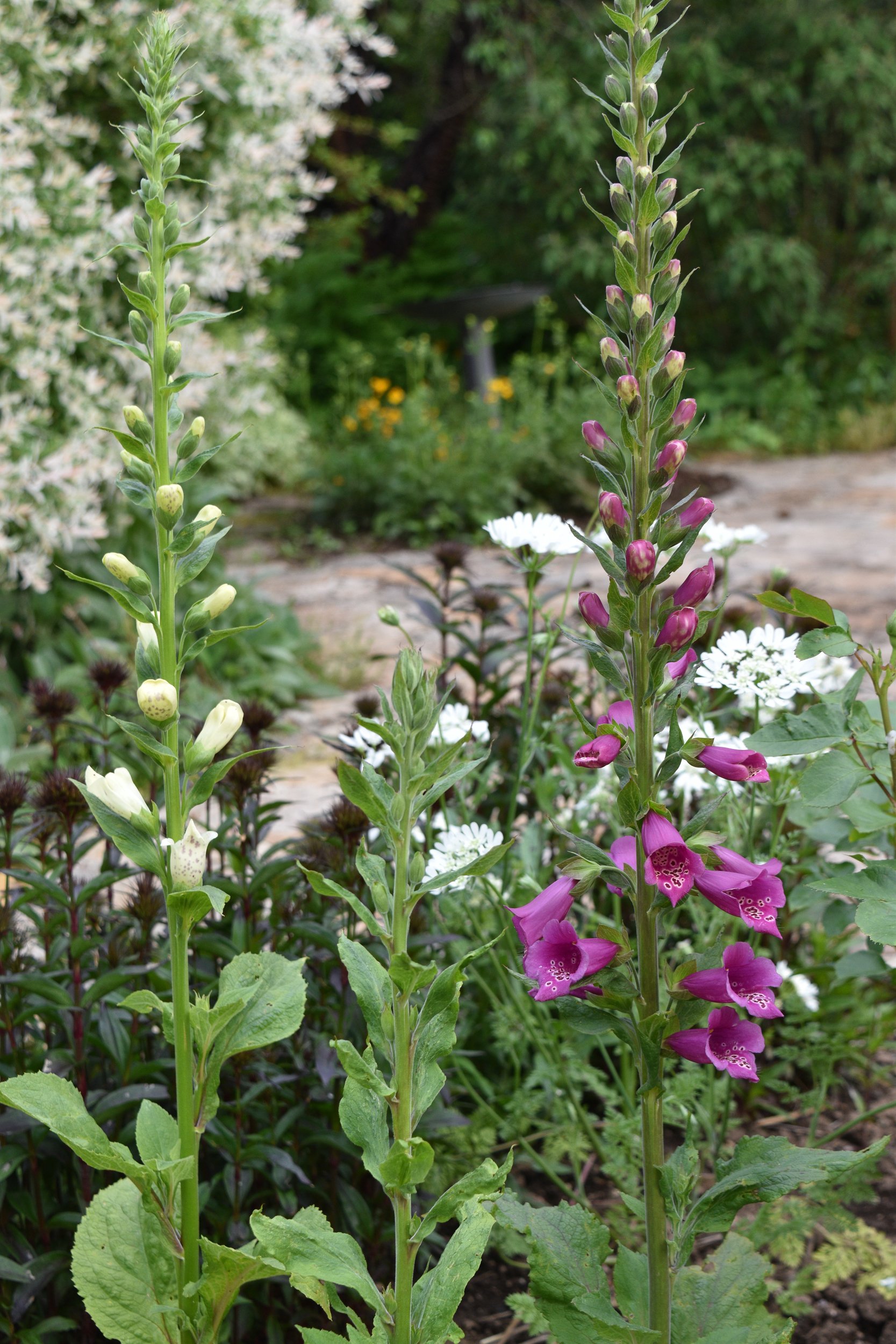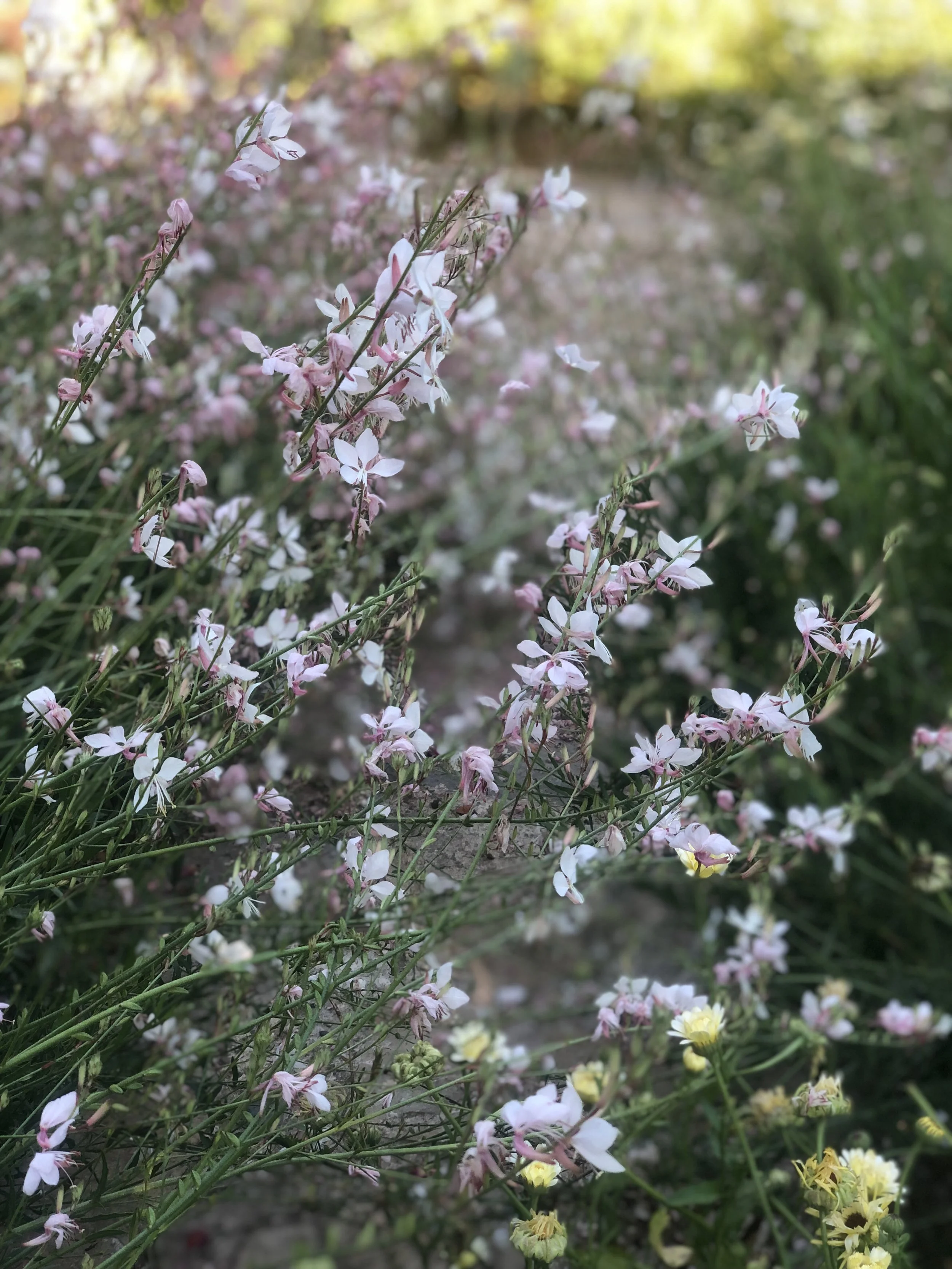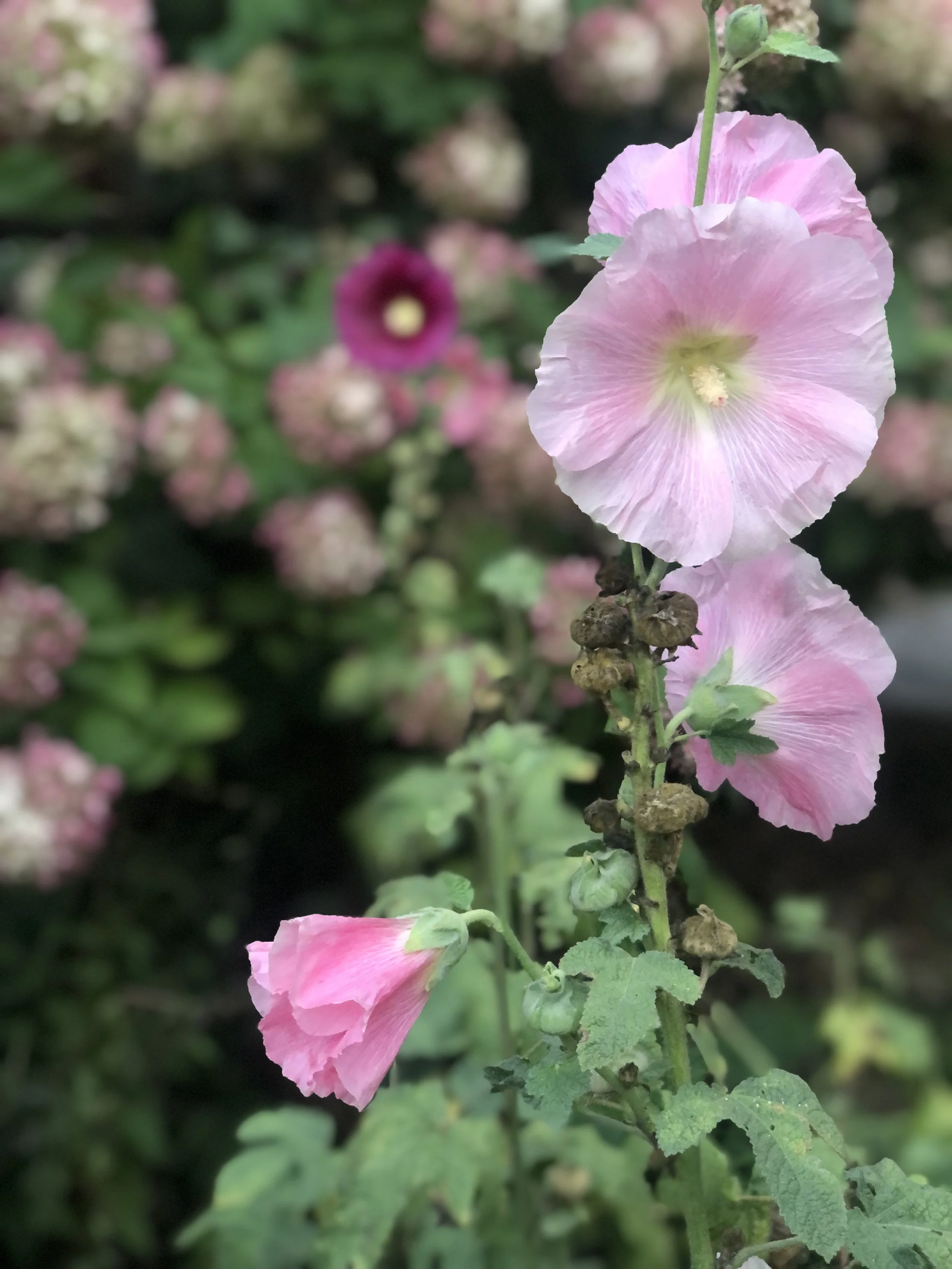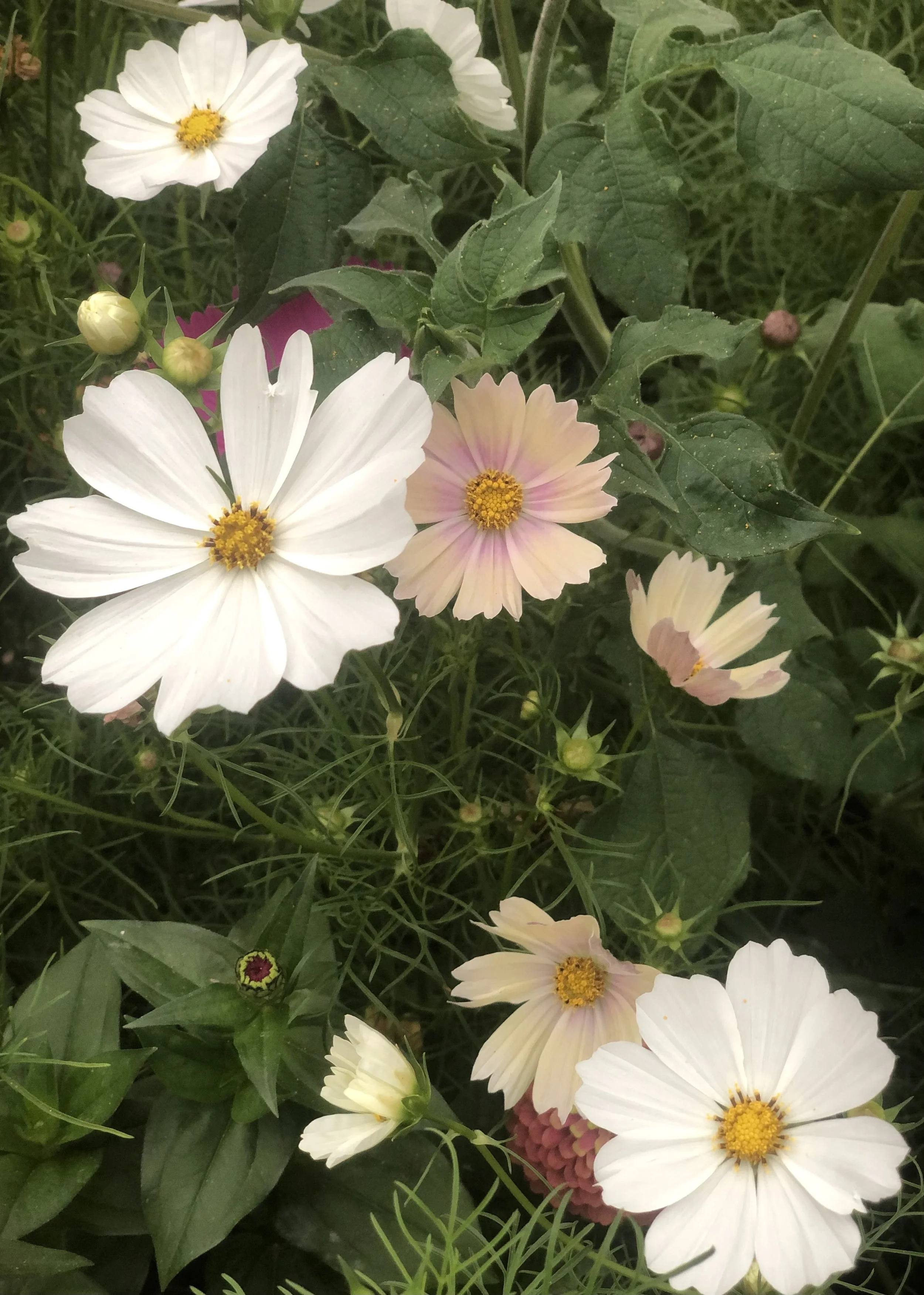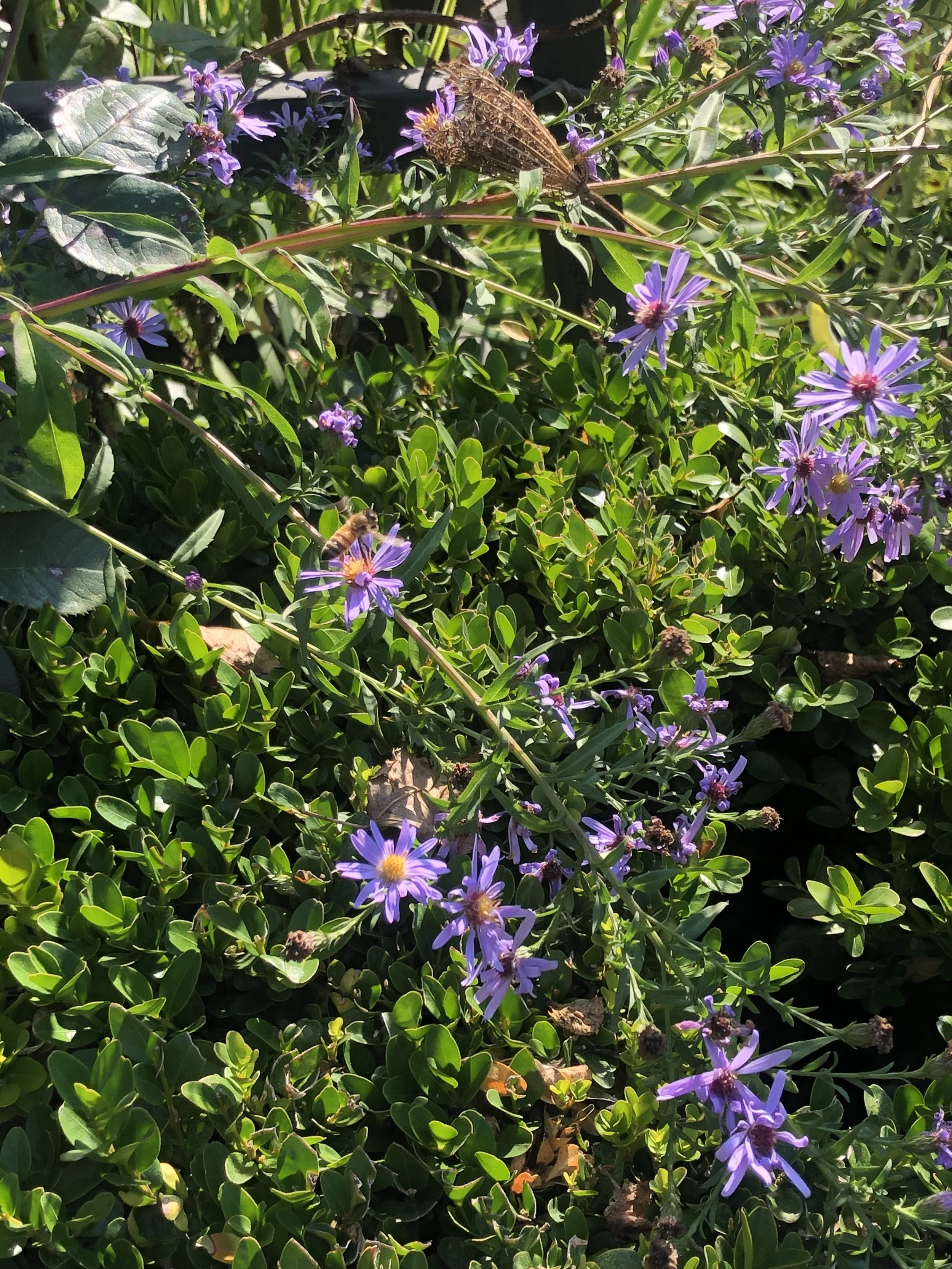A Garden for the Pollinators
Cottage gardens lend themselves to a pollinator friendly garden quite naturally. With an informal style and happy jumble of old fashioned flowers they offer a feast for a variety of pollinators. You don’t need to have a cottage style garden to cater to pollinators though.
When planning my gardens I break down the growing season so there is always something for the hungry pollinators as well as fresh color and flowers. They key is to offer as many options as possible through various flower shapes, sizes and height.
The very earliest of flowers here can be found in our patch of woods. Trillium, wild violets, hellebores, tiny crocus. Food for the bees when they come out on a warm day.
May and June are filled with roses, peonies and hardy annuals. The first to begin the show are climbing and rambling roses. The majority of them are of the vintage variety with mostly open faced, flat laying blooms. They are absolutely covered in bees from morning to dusk.
The hardy annuals I am so very fond of are an excellent source of nectar for the pollinators. Ammi, Dara, Orlaya, Nigella, Larkspur, Cornflower, Calendula and poppies. All have blooms that lay flat making it easy for the bees and butterflies to collect pollen. I love watching the bees with their tiny legs covered in pollen go about their duties. These flowers continue their offering May through mid-July in my area (zone 8a-b).
Biennials are important in the garden for the pollinators as well. Lunaria/Honesty, Sweet Rocket and Sweet William are some of the earliest bloomers, late April or early May is when they first begin their flowering period. Later in early summer, Foxgloves offer a spire of pollen for the bees. They tuck themselves deeply into the tubular bloom and come out covered with the sticky yellow nectar, making their way up the foxglove plant as though climbing a flight of stairs. Oftentimes, I will find them sleeping inside exhausted from their days work.
Flowering trees and shrubs and are invaluable in the garden. As are herbs such as Oregano and Thyme.
Perennials they can find in my garden are Lavendar, Catmint, Gaura, Verbascum, Erigeron and Yarrow. Gaura in particular is a favorite both of the pollinators and mine. It dances in the breeze with the bees visiting the blossoms as quickly as they can. I find it mesmerizing.
Hollyhocks are a summer blooming biennial that bees can frequently be found sleeping in, their little legs still covered with the harvest of the day.
The selection of summer blooming annuals is vast, some of my favorites for their pollen offering are:
Cosmos, Snapdragons, Scabiosa, Zinnias, Rudbeckia and all Salvia.
Later in the season Dahlias that are open and flat, sunflowers, and asters are all covered in bees on those golden autumn days. The asters in particular. Mine absolutely hum with bee activity.
It brings me great joy that my garden offers the bees and other pollinators the nectar they are seeking. They are small and hard working, while tender at the same time. We must look out for these invaluable creatures and help them thrive. It is so very rewarding.
Thank you for stopping by and reading this little blog.
Wishing you the best of everything.
x Susan
